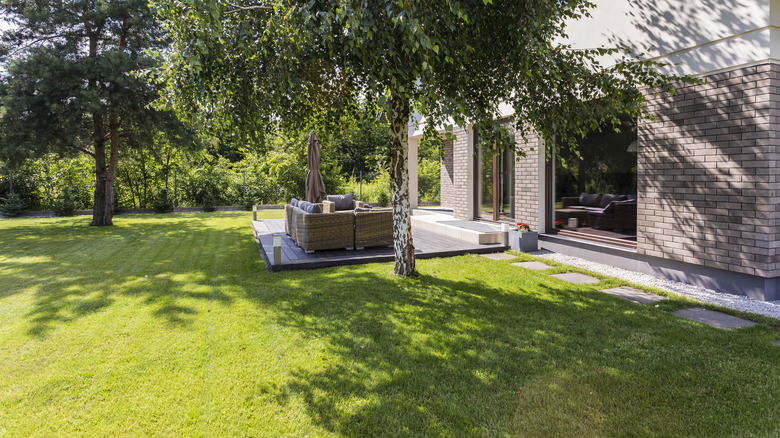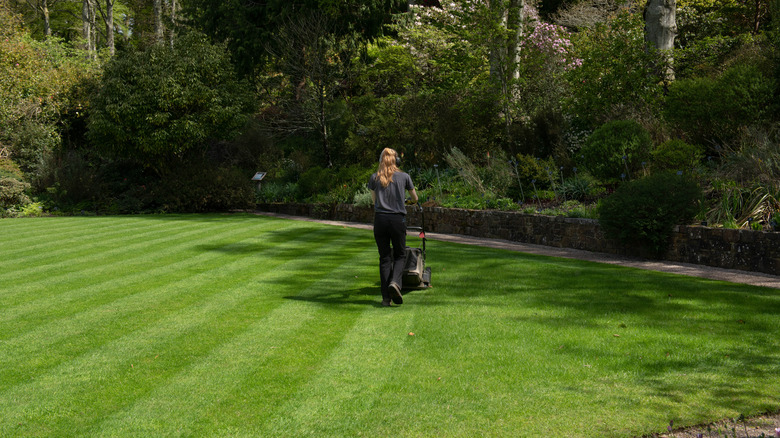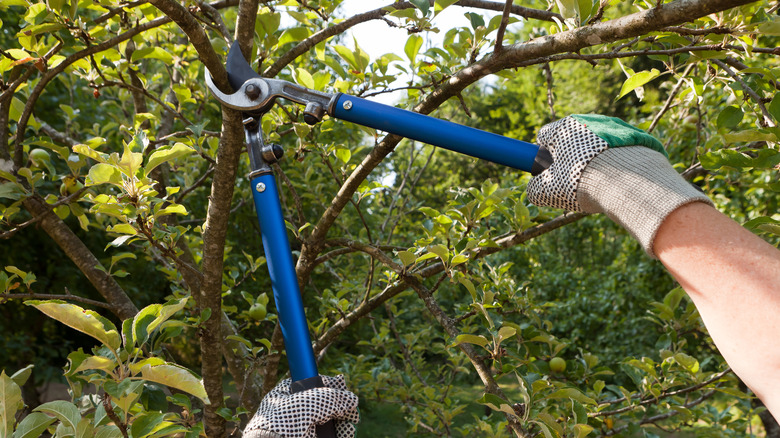Keep Your Shady Lawn Healthy With These Handy Tips And Tricks
Everyone loves the shade of a tree come summertime, but it can wreak havoc on your lawn. Specifically, it can make it difficult for the grass to get enough sunlight or absorb water in a timely matter, leaving it discolored, patchy, or with leggy blades. However, it doesn't have to be that way. There are certain measures you can take in order to keep your shady lawn healthy. You just have to tailor your landscaping maintenance to cater to grass that spends most of its time in the shadows.
Specifically, there are three things you can focus on. You can mow less often and raise your mower blades higher so you don't take off as much length. Having longer grass will help it photosynthesize better. You can also lessen the amount of shadows on your lawn by regularly pruning back tree branches and thick shrubs, allowing more sunlight to hit the grass. And lastly, you can overseed your lawn with a grass type that thrives in the shade, helping you to reduce the number of struggling patches and bare spots. Here is a deeper look into how to maintain a healthy shaded lawn.
Change the way you mow it
Most people mow their grass once a week, but you will likely need to mow less frequently with a shady lawn. You also want to cut it a little higher in order to increase the surface area of the grass blades, which creates more photosynthesis. Grass that isn't able to photosynthesize enough ends up looking scraggly and discolored because it's not producing enough food. Cutting it higher helps give a boost in production and allows you to grow healthy grass in the shady parts of your yard.
Generally, you don't want to cut shaded grass lower than 3 to 3.5 inches, whereas sunny lawns are usually cut down to 2.5 inches. As for frequency, you don't want to cut more than 1/3 of the blade at a time. This ensures that there is enough surface area for photosynthesis, which will deliver enough nutrients to the plant and ensure it has strong and healthy roots. This is important as shaded grass is often more fragile than its counterpart which sits in full sun. Using this rule, you should cut your shadowy lawn when it reaches 4.5 inches.
Prune trees and overseed your lawn strategically
Next, you want to ensure your grass isn't sitting in more shade than it needs to be. This means strategically pruning back any tree or shrub branches that are causing excessive shade in your yard. This will allow more light onto the lawn, which will help the situation. However, make sure you don't go overboard with your shears. You can safely remove up to 25% of a mature tree's canopy without hurting it, but it's often best to remove less than that. The tree needs its foliage to create photosynthesis, so removing too much of its crown will curb how much food it can make. When deciding which limbs to cut, focus on removing dead or damaged branches.
If your shaded lawn is still struggling even after you have altered your mowing practices and allowed more light to hit the area, then you want to try overseeding your lawn strategically. Overseeding is when you plant new grass seeds in struggling, patchy, or dead lawn areas. To improve its appearance, choose a shade-tolerant grass seed so it flourishes rather than struggles in these dim areas. The best kind of lawn for shady backyards depends on where you live. Ryegrass, tall fescues, and fine fescues are great for cool-season grasses since they only need four hours minimum of sunlight daily, while Zoysiagrass and St. Augustinegrass are best for warm-season grasses since they need about three hours minimum of direct sunlight a day.


